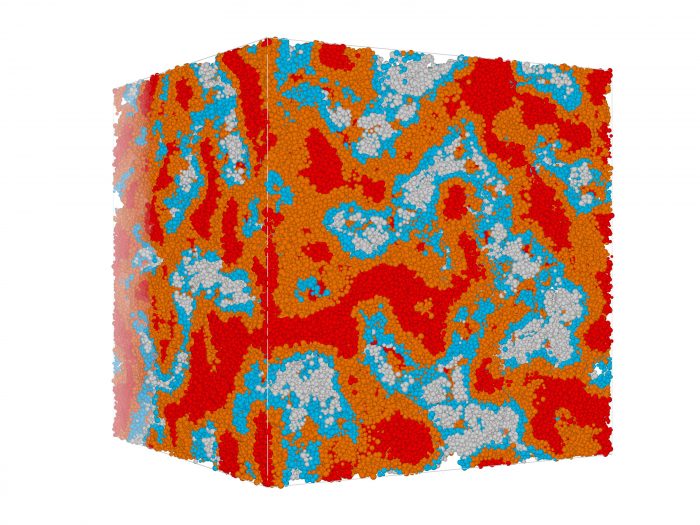Calcium–silicate–hydrate (C–S–H) nanoscale gels are the main binding agent in cement and concrete, crucial for the strength and the long-term evolution of the material. Even more than the molecular structure, the C–S–H mesoscale amorphous texture over hundreds of nanometers plays a crucial role for material properties. We use a statistical physics framework for aggregating nanoparticles and numerical simulations to obtain a first, to our knowledge, quantitative model for such a complex material. The extensive comparison with experiments ranging from small-angle neutron scattering, SEM, adsorption/desorption of N2, and water to nanoindentation provides new fundamental insights into the microscopic origin of the properties measured.
https://www.pnas.org/content/113/8/2029
https://www.nature.com/articles/ncomms12106
https://pubs.rsc.org/en/content/articlehtml/2013/sm/c3sm52232f
https://link.springer.com/article/10.1140/epjst/e2014-02264-1
https://ascelibrary.org/doi/full/10.1061/%28ASCE%29NM.2153-5477.0000120
